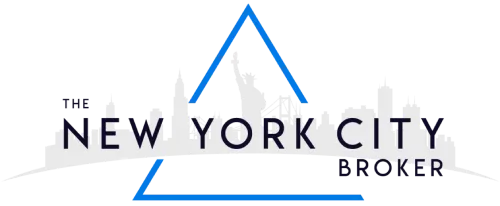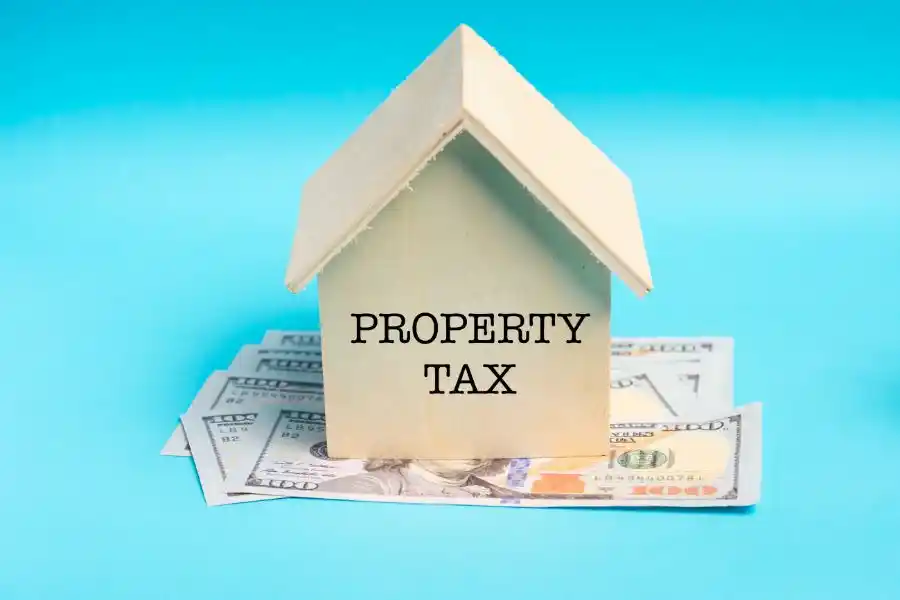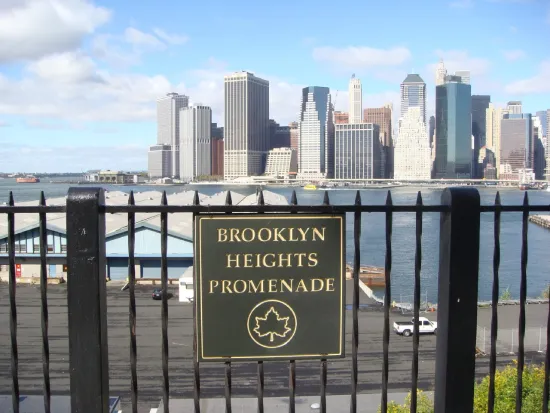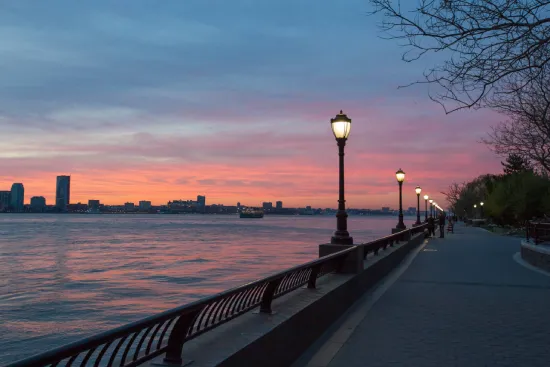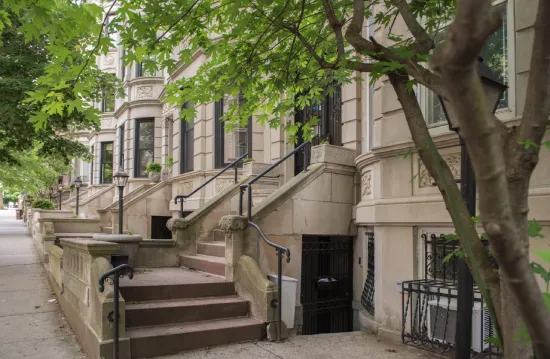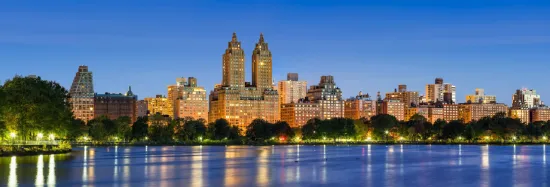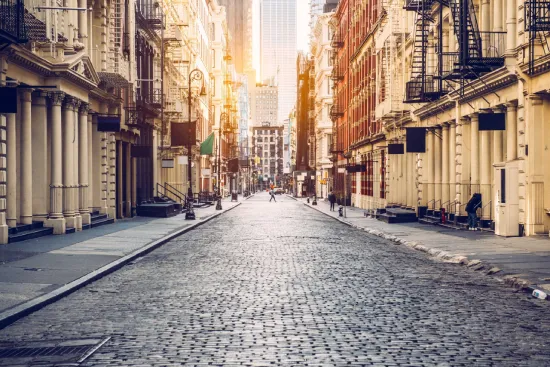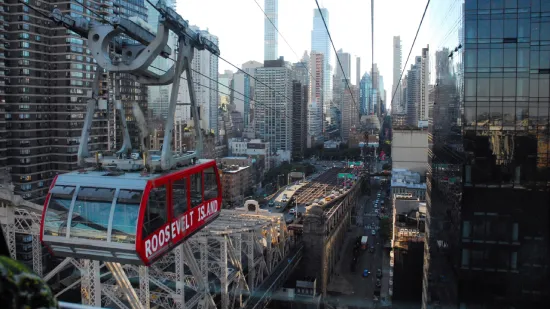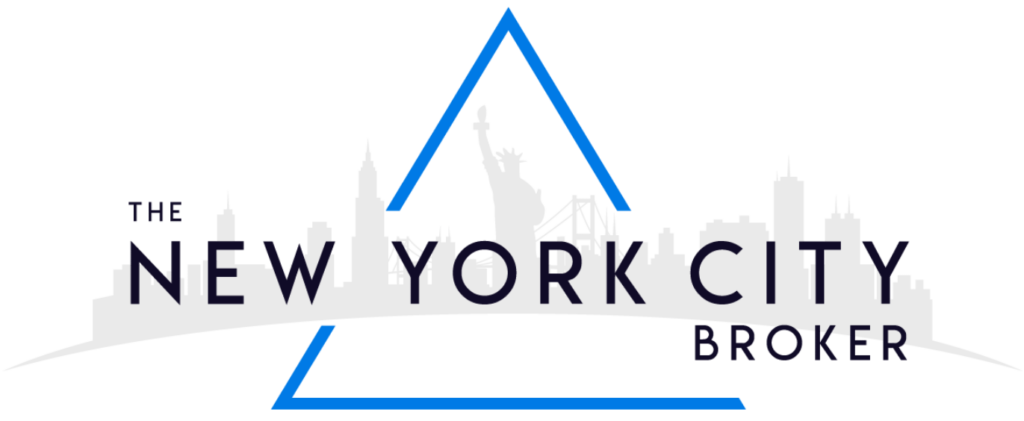Financial District – The “one” neighborhood that encapsulates the corporate aura associated with NYC, the global financial center. It’s a unique blend of historic landmarks and iconic skyscrapers, buildings that shaped (and are still shaping) the global financial landscape.
Geography
Financial District covers most of the lowermost tip of Manhattan Island. It was the tip of the island until Battery Park City was raised from the Hudson River. FiDi is bordered by BPC on the west (separated by Westside highway), the Battery in the South, East River in the East, and the neighborhoods of TriBeCa, Civic Center, and Two Bridges in the North.
History
The Financial District has a rich history, and it has been financially and strategically important since the beginning. It was first occupied by the Dutch in the 1600s and called New Amsterdam for Fort Amsterdam, which was meant to protect the inland fur trade. Then the British took over and renamed it New York City. This makes it (or, in a broader context, lower Manhattan) the birthplace of NYC. Some Financial District street names still retain their Dutch/British roots. Wall Street was literally a wall to prevent the Dutch side from the English one, which it didn’t. Broadway was the broadest street.
After the War of Independence, the Buttonwood Agreement was signed in 1792, which became the roots of what would become the New York Stock Exchange (NYSE). It got an official building once in 1865 then again in 1903. The Financial District was almost destroyed in 1835 due to a fire, but its financial roots/pedigree remained. The neighborhood also became the birthplace of the great depression of 1929, which swept across the whole world.
September 11 attacks, one of the most historically morbid events which practically changed the course of history, and not just for the US but for the entire world, also took place in the Financial District. But the redevelopment that started after it is a testament to the country’s resilience. In 2011, the Federal District also saw the beginning of Occupy Wall Street protests.
Origin Of The Name
The exact origin of how Financial District or FiDi is unknown, but it’s believed that the financial/trade importance of the area, which was established by the Dutch and retained by the British, is the reason it’s called the Financial District.
Main Attractions Of The Neighborhood
Important business can hardly be done on an empty stomach, so as one of the business/trade capitals of the world, the Financial District contains a great variety of amazing food establishments.
- Fraunces Tavern (54 Pearl St): This historic tavern is part of the fabric of the neighborhood and can trace its root all the way back to the 1700s and George Washington, who used to hold meetings in this tavern.
- Adrienne’s Pizzabar (54 Stone St): This restaurant is famous for its old-fashioned pies and good environment.
- Hole In The Wall (15 Cliff St): It’s a prominent café and bar in the heart of the neighborhood. Its patrons love it for its brunch menu, avocado toast, and coffee.
- The Dead Rabbit (30 Water St): It’s an Irish bar with bells and whistles, but it retains a genuine aura and is counted among the best Irish bars in the city, despite being one of the newest (2013).
- Trinity Place Bar and Restaurant (115 Broadway): It’s a 1904 bank vault converted into a restaurant in 2006. But the amazing food makes it more than just an aesthetic/historic attraction.
It wouldn’t be a stretch to say that few other cities, let alone neighborhoods, are home to as many iconic buildings as the Financial District in NYC.
- One World Trade Center (285 Fulton St): The main building in the rebuilt World Trade Center is the tallest building in the US and the Western Hemisphere and the seventh-tallest in the world. It is 1,792 feet tall (to the tip) and stands as a gorgeous piece of architecture.
- New York Stock Exchange building (11 Wall St): Also called the “Big Board,” is the largest stock exchange in the world. The building has been there since 1903 (expanded in 1920) and is recognizable thanks to the renowned pediment (made up of 11 figures): Integrity Protecting the Works of Man.
- Trinity Church (89 Broadway): It’s a historical building, built multiple times, and the 1846 structure (over 285 feet) that stands today was the tallest building in the country for about 23 years.
- Four Seasons Hotel New York Downtown (27 Barclay St): This 926 foot tall, 82-story building is one of the tallest residential buildings in not just the neighborhood but all of lower Manhattan.
- Federal Reserve Bank of New York (33 Liberty St): It’s an imposing structure sitting on the gold vaults resting on bedrock 80 feet below the street level.
While the Financial District is perceived as being more about work than fun, it’s not entirely an “all work and no fun” neighborhood and contains a lot of attractions for tourists and residents alike.
- Charging Bull (Broadway, Near Bowling Green): One of the most famous and iconic attractions of the Financial District, the neighborhood of skyscrapers, is ironically not a building but a 7,100-pound bronze statue symbolizing the strength of Wall Street.
- One World Observatory (117 West St): Resting on the top three floors of the One World Trade Center, allows you to gaze at NYC from literally the top.
- City Hall Park (Broadway & Chambers St): It’s a public park with deep historical roots. It used to be called “the Commons” in the 1600s and served as a communal pasture.
- Bowling Green NYC (Broadway & Whitehall St): It’s the oldest park in NYC (1733) and the starting point for Ticker Tape Parade.
- The Oculus (Church St): The transportation hub for the new World Trade Center and a shopping mall is easily one of the most stunning (and costliest) structures in the Financial District.
Another attraction that bears mentioning outside the usual list is The National September 11 Memorial Museum (180 Greenwich St). It’s located at the exact site of the twin towers and is a stunning, thought-provoking memorial to one of the greatest national tragedies.
What Is the Financial District Known For?
- Wall Street.
- 9/11.
- Its rich history, which is tied quite tightly to the history of the nation.
- Some of the most iconic structures and famous buildings in NYC.
- Some of the tallest buildings in the city.
- Being the reason NYC is considered the financial center of the world.
- The place where George Washington took oath as the first president of the US.
Population
The population of the Financial District is 63,383.
Interesting Facts About Financial District
- In 1776, when the declaration of independence was read, people went into the Bowling Green Park (Broadway & Whitehall St), the oldest park in NYC, and toppled the statue of King George, the third to be melted for bullets for the War of Independence.
- Ticker tape parade started out spontaneously in the Financial District (Canyon of Heroes) when in 1886, after the dedication of the statue of liberty, office workers on both sides of the Broadway started through ticker tape, which was an ample in financial/stock-related offices. The canyon of Heroes is lined up with the names of the people for whom this parade was thrown.
- The Equitable Building (120 Broadway) in the Financial District and the shadow it cast was one of the main catalysts of the 1916 zoning resolution, which forced buildings to follow structural guidelines past a certain height to allow better sunlight penetration. It triggered the construction of buildings with narrower heights (wedding cake design).
- The NYSE (11 Wall St, New York) building has a Buttonwood tree in front to commemorate its origins.
- The New York Fed’s gold vault currently contains (2019 estimate) about 3% of the total gold currently available in the world (excluding unmined reserves).
